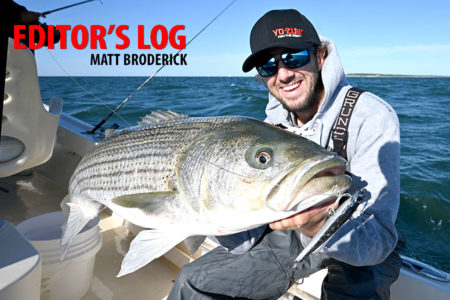It had been a long and frustrating wait for open and charter boats, and most tackle shops, to get the okay to begin conducting business again. That happened last Wednesday when the Long Island region met the requirements for Phase One reopening. Some captains wasted no time in beginning their sailing schedules. Others were still putting the finishing touches on getting their boats ready for what would be for most, their first trip of the season. That included preparations for meeting the CDC and state guidelines required to operate under Phase One. Many boats had already missed out on a solid month of porgy fishing and several weeks of fluke season. A few would have been searching out spring cod and ling, while others would have kicked off their season with the opening of striped bass season on April 15.
Now they can get back to business – sort of – since carrying capacities on party and charter boats have been greatly reduced to meet social distancing reguirements. In many cases, that translates into just 25 percent of the boats capacity. That also means that most open boats are requiring reservations for all trips, and in some cases, prepaid reservations in order to ensure yourself a spot. But it’s all good news for the many anglers who have been anxiously awaiting the opportunity to climb aboard their favorite open boat or sail with a familiar charter captain.
Unfortunately, that is not the case for open and charter boats sailing out of New York City ports. Long Island and New York City are considered separate regions and New York has not yet met the requirements for Phase One reopening. That has to be especially frustrating for captains who have to watch New Jersey and Long Island boats fishing the same waters they would be fishing. Hopefully, this situation is resolved soon.
The following are the required guidelines as they appear on the New York State website. For for-hire boats and their passengers, no more than the maximum number of people who can safely maintain an appropriate social distance of six feet, inclusive of both crew and passengers, unless all are members of the same household. If such distance cannot be maintained, acceptable face coverings must be worn at all times by all individuals on the vessel. Land based fishing guides may operate so long as personal contact is minimized and social distancing protocols, including wearing acceptable face coverings when individuals are less than six feet apart from one another, are adhered to by all parties. Other requirements include enacting protocols and procedures to ensure that no fishing equipment may be shared, unless it has been cleaned and disinfected between users. Nets or gaffs may be handled only by crew members. Establish designated areas for pick-ups and departures, limiting contact to the extent possible. Employers must provide employees with an acceptable face covering at no-cost to the employee and have an adequate supply of coverings in case of replacement. Acceptable face coverings include but are not limited to cloth (e.g. homemade sewn, quick cut, bandana) and surgical masks.
Anglers must also do their part to keep themselves and others around them safe by practicing social distancing guidelines, not only on the boat, but also prior to boarding. Virtually all boats are requiring face coverings or you won’t be permitted to board. I’d recommend wearing a gaiter, the type used to protect you from you the sun. They are designed to be worn in hot, sunny climes and will be more comfortable than a mask when summertime temperatures take hold. They are easily pulled up to cover your face and provide the added benefit of sun protection. You might also want to bring along your own hand sanitizer. Before booking a reservation or boarding a boat, make sure that boat is following protocol. If not, find another boat.
As for tackle shops, most have been operating under a great deal of uncertainty. The Phase One opening removes that uncertainty by clearly allowing them to operate with curbside service out of the front door, instead of the back door policy many shops were operating under. Contact your local tackle shop for their policy on ordering or procuring bait and tackle.




